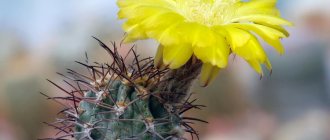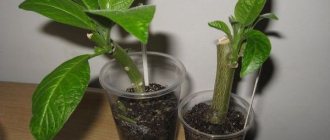Gravilat is a perennial flowering plant.
This flower is common in cold and temperate regions, often in its natural environment it can be found in the Caucasus, Siberian Territory, Far East, Kamchatka, Sakhalin.
The perennial is unpretentious and distinguished by its endurance and attractive appearance.
Erect stems are crowned with inflorescences and single flowers.
The trifoliate leaves have pronounced veins and a jagged edge.
Plant varieties
are known , the most famous are: urban, river, hybrid, Chilean, garden, bright red, forest, creeping, Aleppo.
Each species , in turn, has many varieties, the most popular among them:
- "Red Dragon" (terry gravylate) is distinguished by the presence of large super-double inflorescences. It pleases with abundant flowering during the summer, but begins to bloom only 14 weeks after sowing;
- "Crimson" : its inflorescences have semi-double flowers, blooms in early summer;
- “Fireball” : distinguished by large flowers, reaching 4 cm in diameter. The leaves are lyre-shaped with teeth, they remain green for a long time;
- "Blazing Sunset" : begins to bloom in June, there are many flowers, double inflorescences. Reaches 60 cm;
- "Double Sunrise" : perennial, grows up to 60 cm. Blooms from the end of June, the size of the flowers is small, they are red, in paniculate inflorescences;
- "Cosmopolitan" : perennial, reaches 40 cm. Large semi-double flowers have a cream color and pink edging;
- "Mrs Bradshaw" : perennial, characterized by abundant flowering for a long time. Flowering begins the next year after planting, the flowers are fiery red, semi-double;
- "Mai Tai" is distinguished by single flowers collected in paniculate or corymbose inflorescences. Blooms from June to September.
Chilean Gravilat: planting and care
The plant is not capricious and easy to care for. It is undemanding to soils, but prefers light loams with a slightly acidic or neutral reaction. Flowers can be planted in partial shade and in the sun; they bloom best in an open place. Does not tolerate soaking areas and overly acidic soil.
Landing
Chilean gravilat is planted in spring, late summer or autumn. The bushes are placed no closer than 20 cm from each other.
Add to the holes and mix with the top layer of soil:
- sand or peat if the soil is too dense;
- humus, compost in mined-out areas;
- high-moor peat with alkaline soil reaction.
It is impossible to deoxidize the area immediately before planting gravel. This is done a few months earlier or in the previous season.
After planting, the bush must be watered to ensure better adhesion of the root system to the soil. The surface is mulched with dry peat or decorative filling - this will save moisture and prevent weeds from germinating.
Basics of agricultural technology
The plant requires regular watering, but does not tolerate stagnation of water in the root area. It tolerates short-term drought well, but without irrigation in the hot summer, the flowers quickly fade, the leaves dry out, and decorativeness decreases. Even if the gravilate is left unattended for a long time, and the above-ground part disappears, the rhizomes can survive. When watering is resumed, the leaves will grow, and flower stalks will appear next season.
Regular fertilizers for the crop are suitable, containing a complete mineral complex, for example, nitroammophoska.
In intensive care gardens, gravilat is fed three times per season.:
- in early spring with nitrogen to increase green mass;
- at the beginning of the extension of peduncles - with an NPK complex;
- at the end of summer or autumn, they give phosphorus and potassium (without nitrogen) - this will increase winter hardiness and have a positive effect on flowering in the next season.
The species plant and varieties of Chilean gravilata with simple flowers do not require winter shelter in most of the territory of Russia. At the end of the season, terry varieties are mulched with dry peat and covered with litter from healthy fruit trees or spruce branches.
Regular pruning of faded flower stalks stimulates the formation of new buds.
Reproduction of gravilat
It is possible to propagate gravilat using seeds or dividing the bush. When grown from seeds, the plant will begin to bloom earlier and flowering will last longer.
To increase the number of sprouted plants, it is recommended to stratify them before planting. A 3-day soaking at a temperature of + 5 – 10 degrees allows you to get seedlings five days earlier.
If you germinate seeds in sunlight, the germination rate reaches 85%.
Gravilat grown from seeds will begin to bloom only after a year. Gravilat should be propagated by dividing the bush only when all the seeds on it are ripe.
When propagating by seedlings, the boxes should be kept warm, the seedlings should be picked and only then transplanted into flower beds. Before sowing, peat or compost must be added to the soil.
Growing gravilate from seeds at home
Gravilat seeds photo Gravilat from seeds
Gravilat seeds can be planted on seedlings or directly in the ground, in spring or autumn. Let's take a closer look at each of the options.
Growing gravilat seedlings
When to plant gravilat for seedlings? They start sowing in early March, trying not to delay, but you can plant until the beginning of April.
- Prepare seedling boxes or containers with mandatory drainage holes in the bottom.
- Fill with loose nutrient soil. You can use soil from the store for flowering plants.
- Make shallow grooves, up to 1-2 cm, place seeds in them at a distance of 3-4 cm. The distance between the rows is 4-5 cm. Cover the seeds with soil.
- You can scatter the seeds on the surface of the ground, press them with your palm and lightly sprinkle the soil on top.
- Moisturize moderately, using a spray bottle.
- To speed up germination, you can cover the container with the seeds with a plastic bag.
- When shoots appear, the bag is removed.
How to sow gravilat seeds at home Photos of seedlings
- As soon as the seedlings produce two or three true leaves, they are carefully dived into separate cups with a diameter of about 7 cm. Help yourself with any sharp object (fork, toothpick, the back of a teaspoon) to pry up the seedling along with the root and a lump of earth. This way you can replant the plants painlessly and they will hurt less.
- 10 days after picking, feed the seedlings with complex fertilizer for flowering plants to stimulate growth.
Gravilata seedlings photo
Gravilate feeding
The plant responds well to feeding. Complex fertilizers should be applied twice per season.
Periodically, after 3 - 4 years, flowers should be renewed using bush division. This gives the plant a more presentable appearance and prolongs flowering.
Most often, propagation by dividing the bush is carried out in early autumn, after the seeds have ripened. The bush is dug up and divided into parts so that each part has a rosette of leaves, at least one bud and roots.
New bushes should be planted in holes. Before planting the plant, you need to add compost or peat to the soil and then water it. With this method of propagation, the first flowers will appear next year. Gravilat is not capricious, but it is advisable to apply full mineral fertilizer 2 times during the summer.
Care
The plant must be planted in areas that are open to sunlight.
The perennial can tolerate partial shade, as well as short dry periods.
However, the plant needs regular moisture, but the soil should not be oversaturated with moisture.
The main requirements for a perennial are:
- periodic loosening of the soil;
- fertilizing 2-3 times per season;
- regular watering.
It is necessary to use a mineral complex fertilizer as a top dressing.
Gravilat can tolerate the absence of fertilizing, but if it lacks nutrients, flowering will not be as abundant and long-lasting, and the foliage will become faded and not so dense.
After the flowering period ends, before the first frost, it is necessary to cut off the above-ground part of the perennial almost to the root.
In winter, it is recommended to cover the bed with gravilates with spruce or foliage.
Planting in open ground
to plant gravilat in loose, well-drained soil, 2/3 consisting of sand. You can add ash, but not as much as sand.
to grow gravilat not by dividing the bush, but by sowing seeds. Since the plant does not tolerate any transplants, it is recommended to sow gravilat in the place where it will grow in the future.
Seeds are planted in the spring, under a film, so that the seedlings are not damaged by possible frosts. When planting, you should leave at least 20 cm between seedlings, as the gravilate grows in breadth.
Diseases and pests
The flower is resistant to diseases and pests.
But when the soil is excessively wet, the root system of the gravel plant may suffer from root rot.
When the disease begins, the affected plants are uprooted along with the soil and burned.
Healthy perennials need to be treated with fungicidal agents.
Problems during cultivation
Gravilate is able to withstand temperatures down to minus 30 degrees. There are varieties (usually with double flowers) that are hypersensitive to low temperatures; they need to be covered for the winter using dry foliage.
Read this interesting article about Bilbergia.
Abelia flowers will delight any gardener if you follow these simple recommendations.
Ever-flowering begonia https://sad-doma.net/houseplants/dekarativnotsvetushhie/begoniya/begoniya-vechnotsvetushhaya.html can be successfully propagated by cuttings. Note to gardeners.
What flowers to plant gravilat with? Beautiful combinations and popular companions
Gravilat in landscape design Beautiful combinations with flowers photo
Gravilat goes well with irises, lupine, forget-me-nots, nemophila, cereals, tiarellas, peonies, phlox, goldenrod, buzulnik, bluebells, eschscholzia, and herbal carnation.
Gravilat photo on a flowerbed with other flowers
The chaotic plantings of these plants against the background of decorative stones look beautiful. You can plant low ground covers nearby, such as periwinkle or tenacious, arabis, bidens.
A little about gravilate
Gravilate has medicinal properties. Its roots contain essential oils, and its leaves contain carotene and ascorbic acid. An infusion prepared from gravilate root will help with diseases of the ENT organs and gastrointestinal tract.
Gravilate is used in cooking and as an aphrodisiac. Gravilata root adds a special taste to dishes and drinks; salads are prepared from young leaves. Native Americans use the boiled roots of the Gravilata triflorum variety to make tea.
And for the curious, we suggest you watch the video about gravity
Use in landscape design
Gravilat is often used as a decorative element in summer cottages. It is low maintenance and bright enough to be noticeable.
Mixborder: 'Mrs Bradshaw' cultivar, 'Crimson Star' aquilegia, Yucca gloriosa, Cornflower and Quinoa
It retains its color throughout the year, and stands out under the snow in winter, which is not typical for most flowering plants. This is why gravilate is so loved by gardeners all over the world. It is often planted in flower beds, since the overall brightness of the flowers creates a single picture that highlights a separate place.
The flowerbed consists of gravilata, salvia, aquilegia, and peonies.
Pairs well with decorative bows, such as allium.
Another option for combining gravilate and alliums
Gravilate and alliums
Its natural, slightly wild beauty looks good next to stone, framed by paths, or with ornamental grasses.
Gravilate in a mixborder along the path
Sometimes gravilate is planted in entire beds, creating the impression that the entire bed is blooming in the same color, although the flowers have different shades.
Border made from different types of gravilate
Decorative benefits
The gravilate flower is perfect for decorative decoration of ridges and alpine slides. The flower is also used in group plantings on lawns. Combining several varieties of plants in a flowerbed will help lengthen the flowering process of the entire flower garden from May to October.
Tall plant varieties are used to decorate bouquets. In the garden, gravilat looks great in a composition with bells, carnations, phlox and peonies.
Compatibility with other garden crops
In a flower garden on a personal plot, gravilat successfully emphasizes the beauty and individuality of the exhibition. It is usually planted with plants such as phlox and bells. They are medium in size and do not overlap each other, revealing all the features of landscape design and the beauty of the area.
The flower also looks good with tall lupins, irises, goldenrod, peonies, cereals, nemophila and other ornamental crops. Original compositions of herbaceous plants in the open ground include large and small stones, and also low-growing decorative flowers, such as periwinkle or bidens, are used as a frame. Various varieties of gravel can be used to form a so-called “hill” from the shortest to medium-sized plants.
Gravilat also looks great as an independent flowerbed plant. You can plant several varieties that will differ in color or even height, forming a complex-shaped hill or a special flower bed. By choosing varieties that differ in the beginning of flowering, you can get a flowerbed that will stand out with bright flowers throughout the season, from early spring to mid-autumn. In this case, the flowers will fade gradually, without interfering with other plantings.
Features of flowering
The plant blooms at the end of July and delights us with its double inflorescences for at least three weeks. What a pleasure it is to admire flowers during this period. They paint our areas with new colors - bright and rich.
As already mentioned, gravilat is an unpretentious plant. He favors shady areas of the garden, but at the same time is not afraid of the sun. Therefore, it can be grown almost anywhere. The only difference will make itself felt during the flowering period. If the plant is planted in the shade, then it will not bloom so magnificently and abundantly. However, this also has its advantage. The flowering period will last longer.
Subtleties of landing
The gravilat plant is one of the most unpretentious inhabitants of gardens and flower beds, so there are no special subtleties in planting it. Gravilat does not like transplantation - it is better to immediately place it in a permanent place. When choosing a location, you need to keep three points in mind: firstly, gravilat does not grow in nature on acidic soils, preferring neutral and slightly alkaline soils, secondly, species accustomed to harsh mountain conditions cannot tolerate stagnant water, and thirdly, it very light-loving.
[adsp-pro-6]
Gravilat will easily adapt to unfavorable conditions, but it will grow slower and bloom worse, and the beautiful corrugated foliage will shred and fade. Therefore, before planting, if the soil is not suitable for the plant, it must be deoxidized and loosened properly. To make the soil more breathable, it is diluted with sand, and to reduce its acidity, wood ash is added.
Weeds will allow you to quickly understand whether the soil on a site is acidic, neutral or alkaline. Horsetail thrives in acidified areas, and wheatgrass feels good. On neutral ones - spurge, sow thistle, chamomile, clover. On alkaline ones - bindweed, wild poppy, doze.
The flower does not like transplanting, so it must be planted immediately in a permanent place











